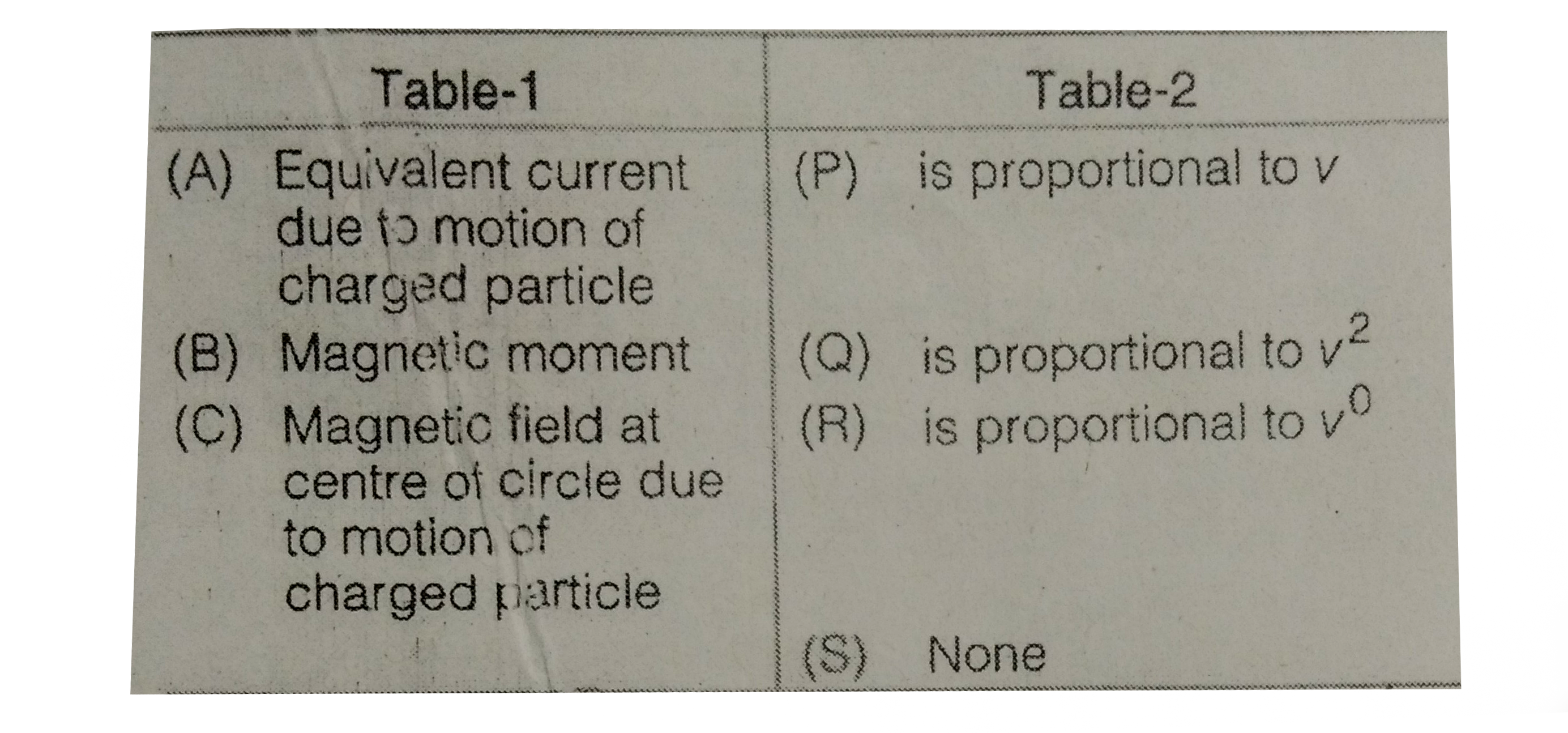A proton is moving in a uniform magnetic field B in a circular path of radius a in a direction perpendicular to Z- axis along which field B exists. Calculate the angular momentum. If the radius is a and charge on proton is e.
Bea2
eB2a
a2eB
aeB
The correct Answer is:c
To solve the problem of calculating the angular momentum of a proton moving in a uniform magnetic field, we can follow these steps:
Step 1: Understand the situation
We have a proton moving in a circular path of radius a in a uniform magnetic field B. The motion is perpendicular to the z-axis, which means the magnetic field is aligned along the z-axis.
Step 2: Write the formula for angular momentum
The angular momentum L of an object moving in a circular path can be expressed as:
L=mvr
where m is the mass of the proton, v is the velocity of the proton, and r is the radius of the circular path, which is given as a.
Step 3: Identify the centripetal force
The magnetic force acting on the proton provides the necessary centripetal force to keep it moving in a circular path. The magnetic force F on a charged particle moving in a magnetic field is given by:
F=qvBsin(θ)
Since the velocity is perpendicular to the magnetic field, θ=90∘ and sin(90∘)=1. Thus, the magnetic force becomes:
F=qvB
Step 4: Set the magnetic force equal to centripetal force
The centripetal force required to keep the proton in circular motion is given by:
Fc=mv2r
Setting the magnetic force equal to the centripetal force gives us:
qvB=mv2a
Step 5: Solve for velocity v
We can rearrange the equation to solve for v:
qvB=mv2a
qB=mva
v=qBam
Step 6: Substitute v into the angular momentum formula
Now, we substitute v back into the angular momentum formula:
L=mva
Substituting for v:
L=m(qBam)a
L=qBa2
Step 7: Substitute the charge of the proton
The charge of the proton q is denoted as e. Therefore, we can write:
L=eBa2
Final Answer
The angular momentum of the proton moving in the magnetic field is:
L=eBa2
We have a proton moving in a circular path of radius a in a uniform magnetic field B. The motion is perpendicular to the z-axis, which means the magnetic field is aligned along the z-axis.
The angular momentum L of an object moving in a circular path can be expressed as:
L=mvr
where m is the mass of the proton, v is the velocity of the proton, and r is the radius of the circular path, which is given as a.
The magnetic force acting on the proton provides the necessary centripetal force to keep it moving in a circular path. The magnetic force F on a charged particle moving in a magnetic field is given by:
F=qvBsin(θ)
Since the velocity is perpendicular to the magnetic field, θ=90∘ and sin(90∘)=1. Thus, the magnetic force becomes:
F=qvB
The centripetal force required to keep the proton in circular motion is given by:
Fc=mv2r
Setting the magnetic force equal to the centripetal force gives us:
qvB=mv2a
We can rearrange the equation to solve for v:
qvB=mv2a
qB=mva
v=qBam
Now, we substitute v back into the angular momentum formula:
L=mva
Substituting for v:
L=m(qBam)a
L=qBa2
The charge of the proton q is denoted as e. Therefore, we can write:
L=eBa2
The angular momentum of the proton moving in the magnetic field is:
L=eBa2
Topper's Solved these Questions
- MAGNETIC FIELD AND FORCESBOOK - DC PANDEY ENGLISHCHAPTER - MAGNETIC FIELD AND FORCESEXERCISE - Match the following
4 Videos
- INTERFERENCE AND DIFFRACTION OF LIGHTBOOK - DC PANDEY ENGLISHCHAPTER - INTERFERENCE AND DIFFRACTION OF LIGHTEXERCISE - Level 2 Subjective
5 Videos
- MAGNETICSBOOK - DC PANDEY ENGLISHCHAPTER - MAGNETICSEXERCISE - MCQ_TYPE
1 Videos
Similar Questions
The momentum of α-particles moving in a circular path of radius 10 cm in a perpendicular magnetic field of 0.05 tesla will be :
View SolutionA proton is moved along a magnetic field line.The magnetic force on the particle is
View SolutionAn electron is moving on a circular path of radius r with speed v in a transverse magnetic field B. e/m for it will be
View SolutionA proton is moving along Z-axis in a magnetic field. The magnetic field is along X-axis. The proton will experience a force along
View SolutionA charge particle is moving in a uniform magnetic field ib a circular path. The energy of the particle is doubled . If the initial radius of he circular path was R, the radius of the new circular path after the energy is doubled will be
View SolutionA proton and an electron are projected into a region of uniform magnetic field in a direction perpendicular to the field. If they have the same initial velocities then
View SolutionThe path of a charged particle in a uniform magnetic field, when the velocity and the magnetic field are perpendicular to each other is a
View SolutionA proton of mass m and charge q enters a region of uniform magnetic field of a magnitude B with a velocity v directed perpendicular to the magnetic field. It moves in a circular path and leaves the magnetic field after completing a quarter of a circle. The time spent by the proton inside the magnetic field is proportional to:
View SolutionA charged particle is moving in a circular path in uniform magnetic field. Match the following.

View SolutionWhen a charged particle is projected perpendicular to a uniform magnetic field, it describes a circular path in which:
View Solution
